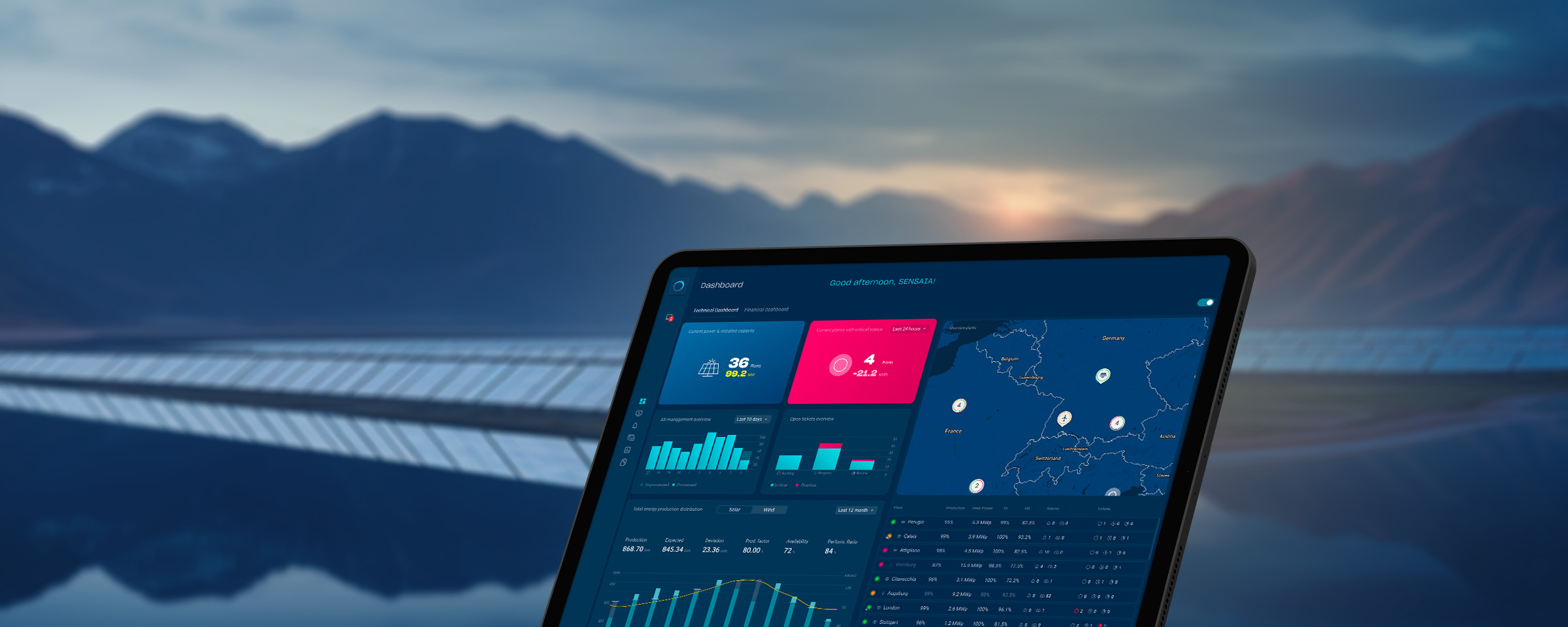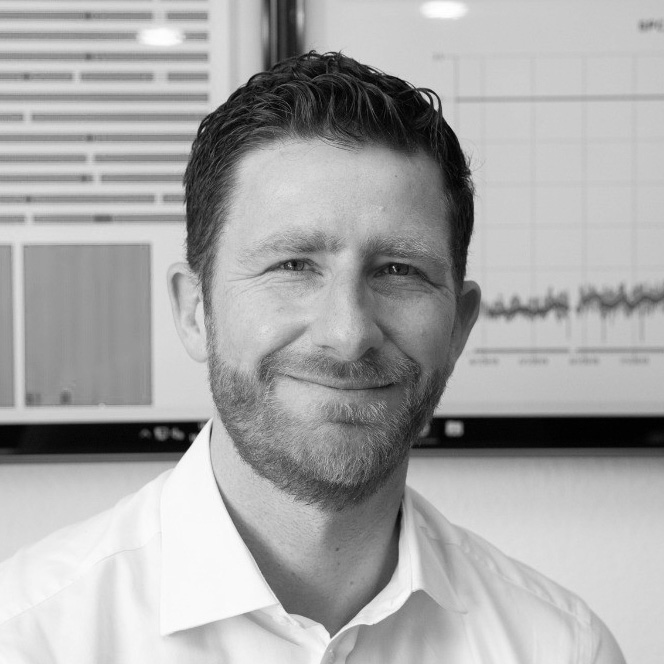
Sensaia – Scaling renewables effectively
Energy services company Iqony aims to lead the era of clean, reliable, distributed, and cost-effective energy. To design, develop and launch the scalable energy operating system Sensaia, we combine our capabilities.
A little back story: In 2021, SENS Iqony Solar Energy Solutions, a global renewable energy service provider, approached us with a real challenge: managing solar assets demanded a lot from employees: separating a technical view (components, faults, alarms) from a financial view (KPIs, profitability) of the assets, combined with a growing number of tools to gather the relevant data. This is not sustainable in the long run. For the Intersolar in Munich, we realized the first prototype for a centralized asset management to solve the mentioned problems.
2022 - The challenge
At that time, Iqony was already exploring the topic of a platform for renewable energies to decarbonize the energy market as part of a research project. The transition from individual large-scale plants to a decentralized energy supply with PV and wind poses significant challenges for planners and operators:
- Ensuring grid stability with proactive optimization of available energy
- Rapid detection and correction of faults, failures, contamination and misalignments in the solar energy sector
- Dealing with the volatility of renewable energy with appropriate efficiency analyses – e.g. wind power: planning with low wind periods
And the most important thing: The overview of these factors should not require separate studies! So, the Iqony team turned to us with the following question:
„How can I track the growing number of solar and wind plants I manage as O&M for customers while technically optimizing the plants? – in the form of an operating system.”
Now it was our turn!
How to design a sustainable energy operating system?
The mathematical models used by Iqony, or parent company STEAG, had been optimized for large-scale plants since the 1980s and 1990s and already offered what we now call AI since the 2000s. But the core issue just mentioned challenged many known aspects.
To solve the problem and clearly define the requirements for the system, we talked to stakeholders, made site visits, and analysed user groups. Iqony’s expertise in sustainable energy generation merged with our expertise in technology consulting, user experience design and front-end development.
In joint workshops, we consolidated the knowledge and prioritized the requirements. This resulted in a clear functional set for the asset management tool:
- Monitoring - provides an overview of the assets with large key numbers and a map
- Predicting - allows preview and comparison between assumed and occurred energy production values
- Alerting - overview of alarms and their intelligent grouping to reduce complexity
- Ticketing - Easy transfer of alarms into tickets that can be processed in a Kanban board
- Reporting - Ability to automatically output detailed asset reports to owners
For each of these functions, we deduced Design Principles. These principles are still a central orientation factor and anchor in developing the unique design language. Our goal here: A simple and intuitive UX without compromising clarity:
What to do when something does not work as intended?
In a solar plant, more than 5000 error messages quickly accumulate. Alerting, therefore, proved to be an enormous challenge. The meaningful bundling of errors and the assignment of calculated root causes (common cause) placed very high demands on the UX and UI design and the underlying algorithm. We found two answers through extensive discussions: A component-based view in the form of a tree and an alert list with specific filters and clear sections.
From the list form, administrators can then select multiple alerts and combine them into tickets. These can then be easily processed and tracked as one task in ticketing:
What matters with an energy OS
With Sensaia, a comprehensive asset management tool has been created that also performs intelligently with a rapidly growing number of large solar and wind power plants.
The user-specific dashboard provides an overview of all data streams from wind and PV plants. Data visualizations offer economic and technical insights and allow people with different prior knowledge to access the complex world of operational data quickly.

„Intuity has played a significant role in getting Sensaia to where it is today. Their structured approach and excellence in design have taken our project to a whole new level. Without them, our success would not have been possible.”
For Iqony, it also successfully brought together previously separate teams and isolated data silos on a common cloud platform.
A common goal
Using state-of-the-art technologies, we can optimize energy consumption, use renewable energy efficiently and reduce our environmental footprint. By combining our expertise, we can contribute positively and create a sustainable future for future generations.
Thank you to the team at Iqony. The topic is close to our hearts!
Do you have a comparable challenge?